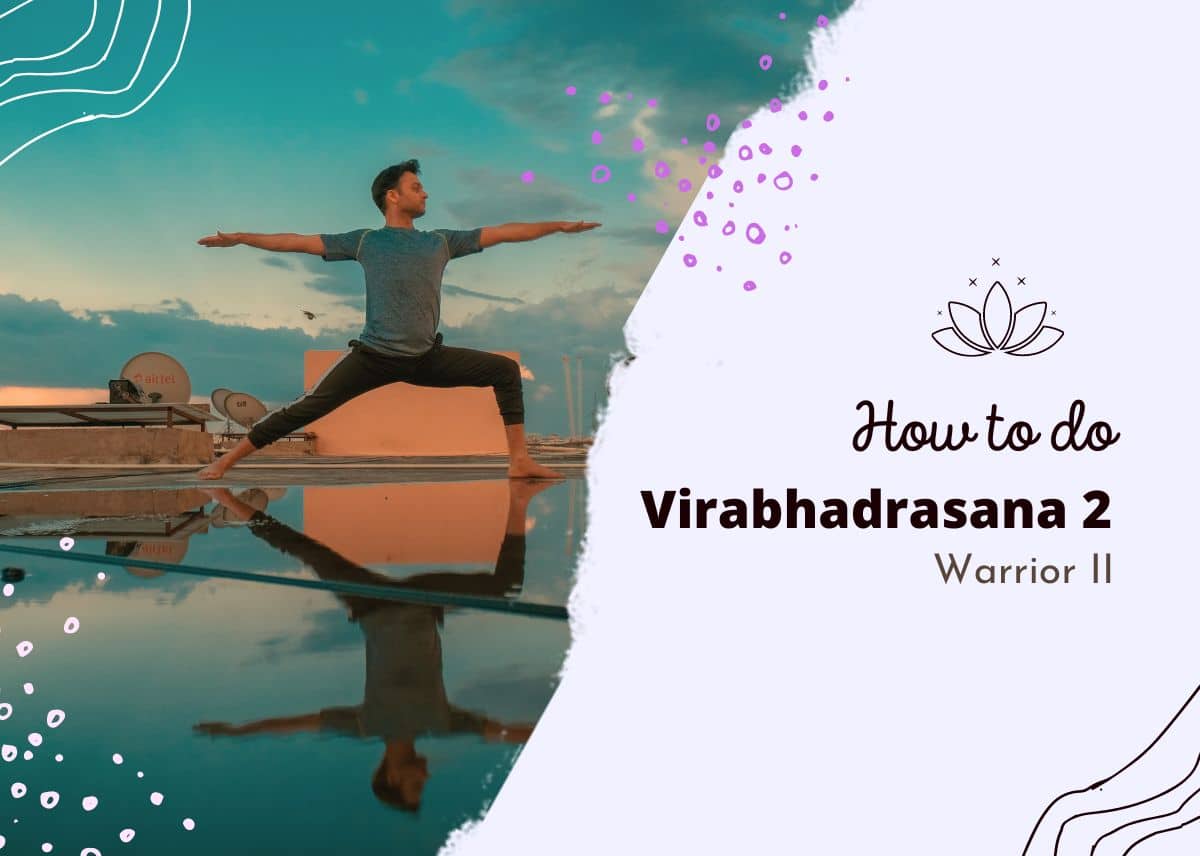How to do Virabhadrasana 2 (Warrior Pose 2)? Virabhadrasana 2, also known as Warrior II Pose, is a popular standing yoga posture that offers numerous physical and mental benefits.
Table of Contents
Here’s a step-by-step guide on how to perform Virabhadrasana 2, along with its benefits and some contraindications to be aware of:
How to do Virabhadrasana 2 (Warrior II Pose):
- Begin by standing at the front of your mat with your feet together. Take a big step back with your left foot, approximately 3 to 4 feet apart. Your right foot should be pointing forward, and your left foot should be angled slightly inward.
- Keep your hips and chest facing forward. On an inhalation, raise your arms out to the sides, parallel to the ground, with your palms facing down. Ensure your arms are fully extended and parallel to the floor.
- On an exhale, bend your right knee, aligning it directly over your right ankle. Ensure your knee is not extending beyond your ankle to avoid excessive strain.
- Gaze over your right fingertips and soften your gaze, focusing on a fixed point in front of you. Maintain a straight line from your head to your tailbone, keeping your spine elongated.
- Keep your shoulders relaxed and away from your ears. Engage your core muscles and maintain a steady and strong stance.
- Hold this position for 30 seconds to 1 minute or about 8-10 breaths, breathing deeply and evenly.
- To release the pose, straighten your right leg, bring your arms down, and step your feet back together. Repeat the same steps on the other side, starting with the left foot.
Benefits of Virabhadrasana 2 (Warrior II Pose):
- Strengthens the lower body: Virabhadrasana 2 primarily targets the legs, including the quadriceps, hamstrings, and calves, strengthening and toning these muscles.
- Increases flexibility: This pose stretches the groin and inner thighs, improving flexibility in these areas.
- Enhances balance and stability: As you maintain the pose, your balance and stability are challenged, helping to improve coordination and body awareness.
- Stimulates digestion and metabolism: The twisting motion involved in Warrior II stimulates the abdominal organs, aiding digestion and promoting a healthy metabolism.
- Builds mental focus and concentration: Holding the pose requires focus and concentration, helping to calm the mind and enhance mental clarity.
Contraindications for Virabhadrasana 2:
- High blood pressure: Individuals with high blood pressure should practice Virabhadrasana 2 with caution. They can modify the pose by keeping the arms at the sides instead of raising them.
- Knee or hip injuries: If you have any knee or hip injuries or conditions, such as arthritis or recent surgeries, it’s best to avoid or modify this pose. Seek guidance from a qualified yoga instructor for suitable alternatives.
- Diarrhea or high blood pressure: Avoid this pose if you’re experiencing diarrhea or have uncontrolled high blood pressure.
- Neck or shoulder issues: If you have any neck or shoulder injuries or conditions, be mindful of your range of motion and avoid straining these areas. Seek modifications if needed.
Always consult with a qualified yoga instructor or healthcare professional before attempting new yoga poses, especially if you have any pre-existing medical conditions or injuries. They can provide personalized guidance based on your individual needs and limitations.
Also See:
- How to do Virabhadrasana 3 (Warrior 3 Pose) – Steps, Benefits and Contraindications
- How to do Anjaneyasana (Low Lunge Pose): Steps, Benefits, and Contraindications
- How to start doing yoga at home for beginners (with pictures and videos)
- How to do Dhanurasana (Bow Pose) – Steps, Benefits and Contraindications







